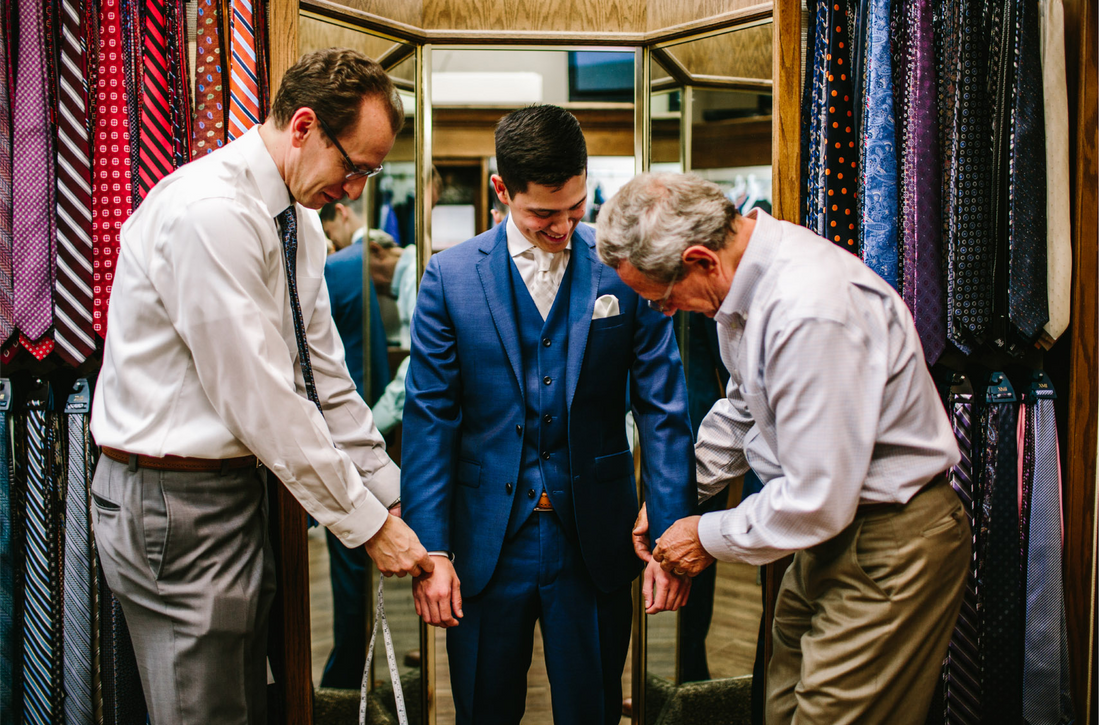Shopping for a new suit (or even jeans or chinos)? You might want to consider what type of break fits the style you’re going for as well as your body type. If you don’t know what a break is, no worries; we’re here to explain! The break is defined as the fold/creasing of the fabric above the bottom front of the pant leg where it hits your shoe. The more it hits your shoe (the longer the pant leg is) the more of a break there is, and the less it hits your shoe (the shorter the pant leg is) the less of a break there is. Pretty simple right? Now let’s look at the pros and cons to each.
No break: This style ends at the ankles, giving your pants no opportunity to touch a shoe (meaning it will not crease or fold because it has nothing to knock into). This look is best for those with a slim or shorter build, or those going for a more modern, European, or youthful look.
Medium break: This style just hits the shoe, and features a cuff. This is not to be used with a slim or tapered trouser. A medium brake is a more conservative look usually seen on business men, older men, or those who are carrying around some extra weight and want to make themselves appear more slender.
Full break: This style features a longer length and significant pooling of fabric atop a shoe. It is featured on wide-leg trousers and dates back to a Jazz age look. Most commonly, you’d find this look on an older man, someone who is trying to hide extra weight, or someone who is going for a vintage look.


